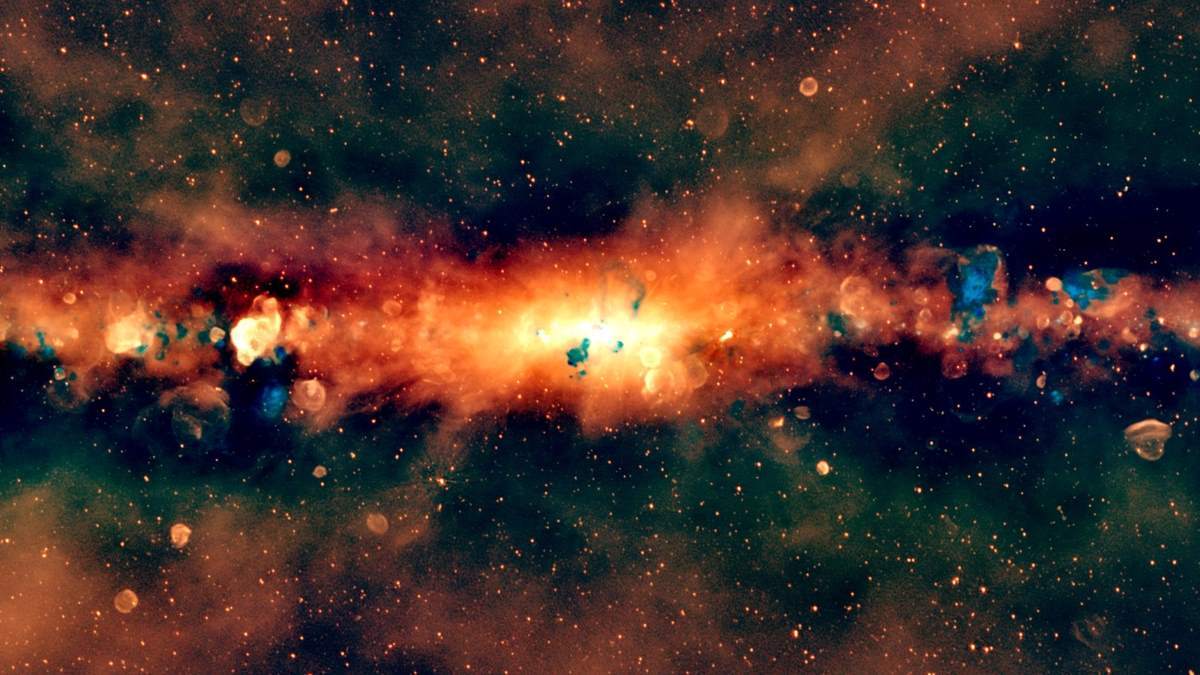1.11.2025

A section of the GLEAM/GLEAM-X view of the Milky Way galaxy. Credit: S. Mantovanini & the GLEAM-X team
The largest low-frequency radio image of the Milky Way ever assembled has captured an unprecedented view of the galaxy, enabling astronomers to study the life stages of stars in new ways.
The data was captured by the Murchison Widefield Array (MWA) radio telescope at Inyarrimanha Ilgari Bundara, the CSIRO Murchison Radio-astronomy Observatory on Wajarri Yamaji Country in Western Australia.
“This low-frequency image allows us to unveil large astrophysical structures in our Galaxy that are difficult to image at higher frequencies,” says Associate Professor Natasha Hurley-Walker from the International Centre of Radio Astronomy Research (ICRAR). “No low-frequency radio image of the entire Southern Galactic Plane has been published before, making this an exciting milestone in astronomy.”
Hurley-Walker is principal investigator of one of the extensive surveys used to construct the image, the GaLactic and Extragalactic All-sky MWA (GLEAM) survey.
Supercomputers at the Pawsey Supercomputing Research Centre combined data from GLEAM and the GLEAM-X (GLEAM eXtended) survey into one image, presented in a paper published in the journal Publications of the Astronomical Society of Australia.
“This vibrant image delivers an unparalleled perspective of our Galaxy at low radio frequencies,” says first author Silvia Mantovanini, a PhD student at the Curtin University node of ICRAR.
“It provides valuable insights into the evolution of stars, including their formation in various regions of the galaxy, how they interact with other celestial objects, and ultimately their demise.”

The GLEAM/GLEAM-X view of the Milky Way galaxy (top) and the same area in visible light (bottom). Credit: S. Mantovanini & the Gleam-X team (top image). Axel Mellinger, milkywaysky.com (bottom image)
Mantovanini’s research focuses on supernova remnants, the expanding cloud of energy and matter left behind after stars explode. While scientists expect to find about 2,000 of these structures in our galaxy, only about 300 have been discovered so far.
The researchers are confident this latest data release will help astronomers find more faint and old supernova remnants which have remained elusive so far.
“You can clearly identify remnants of exploded stars, represented by large red circles,” says Mantovanini of the new Milky Way image. “The smaller blue regions indicate stellar nurseries where new stars are actively forming.”
These areas, known as Hii regions, are formed by the ionisation of the interstellar medium due to ultraviolet radiation (UV) emitted by a newly born star. This ionised gas is visible at radio frequencies.
The data will also help detect planetary nebulae, the final evolutionary stages of low to intermediate mass stars less than 8 times the size of the Sun, and rotating neutron stars called pulsars that give off pulses of radiation at very regular intervals.
“Only the world’s largest radio telescope, the SKA Observatory’s SKA-Low telescope, set to be completed in the next decade on Wajarri Yamaji Country in Western Australia, will have the capacity to surpass this image in terms of sensitivity and resolution,” adds Hurley-Walker.
Quelle: CONNECTSCI
